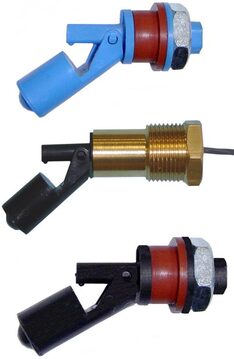Horizontal level switches type PML/FML
The PML/FML series level switches are a simple, reliable and economical solution for level control in all those applications where space and ease of assembly are a mandatory constraint for the user. executions with assembly both from inside and outside. A normally open Reed electrical contact is sealed in the instrument body, a permanent magnet is housed in the float. When the thrust of the liquid, raising the float, brings the magnet closer to the electrical contact, the contact itself closes. By rotating the instrument 180 ° around its own axis, the float will, in the absence of a level, lean against the striking point and the contact will be closed. The thrust of the liquid in this case will remove the float from contact causing it to open.

- PML/FML
PRODUCT DESCRIPTION
- Float switch, one contact side mounting
- Polyprpylene or PVDF materials
- M16, 1/2″, 3/4″, 1″ process connections
- Working pressure up to 6 bar
- Working temperature up to 130°C
- Reed switch SPST or SPDT
- Cable of Fastons electrical connection
- Protection class IP65
ASSEMBLY and INSTALLATION
Assembly from inside the tank 16K• Drill a hole Ǿ 16.5 mm in the tank.
• Unscrew the fixing nut and remove the washer and the expansion gasket.
• Insert the flat sealing gasket.
• Insert the level switch into the hole (Ǿ 16.5 mm) of the tank.
• Screw the fixing nut up to compress the flat gasket, inside the tank, taking the position indicator downward to have the contact N.O. or
upward to have the contact N.C.
Assembly from outside the tank GC−• Drill a hole Ǿ 22 mm in the tank.
• Insert the level switch into the hole until the compression gasket stops.
• Screw the fixing nut so that the gasket begins to expand inside the tank.
• Place the position indicator downward to have the N.O. contact or upward to have the N.C. contact.
• Tighten the nut in order to complete the expansion of the gasket and thus obtain the tightness of the system.
Caution: Verify that the holes for housing the instrument, in the tank, are carefully deburred, in order to avoid damage to theseal and to obtain a perfect hydraulic seal.
 Download Product details >>
Download Product details >>